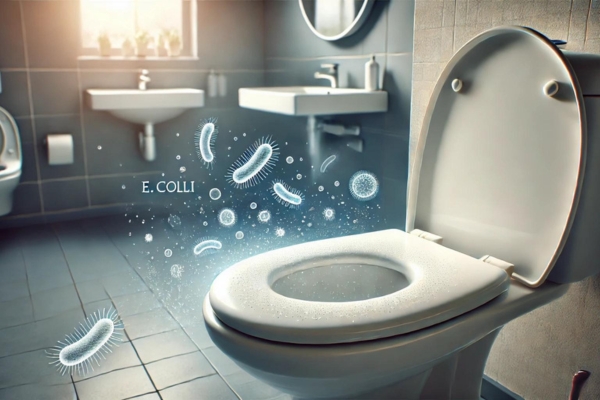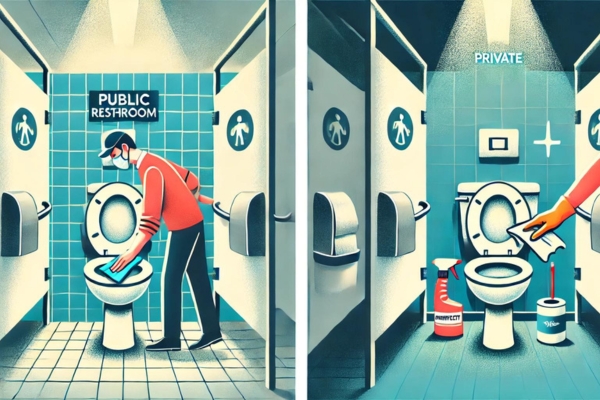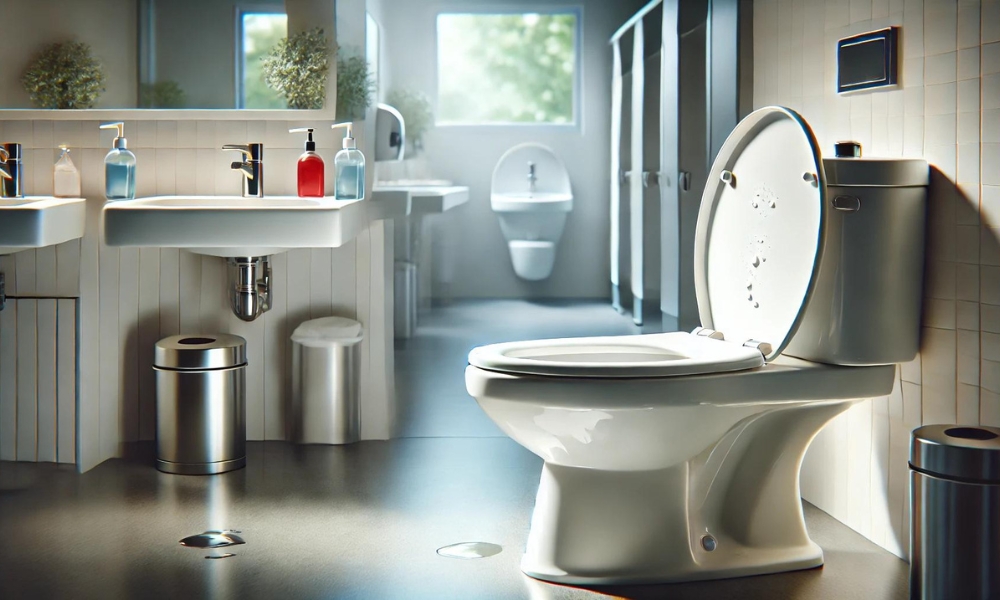In a world where hygiene concerns often dominate public consciousness, the toilet seat has become a symbol of unease—unexpected, but pivotal. It sits at the nexus of cleanliness, a silent fixture in our bathrooms, unassuming yet potent. Frequently perceived as a breeding ground for disease, the toilet seat’s reputation precedes it. Is this deserved, or does myth overshadow reality? This exploration delves into the truth about toilet seats and their Impact role—if any—in the spread of communicable diseases.
The Role Of Toilet Seats In Daily Hygiene Practices

Toilet seats play a surprisingly central role in our hygiene rituals. Their function is clear—support, comfort, and sanitation. Yet beyond their utility lies a deeper connection to our daily routines. Whether in public spaces or at home, the simple act of sitting on a toilet seat brings us face-to-face with our concern for cleanliness. Public restrooms, in particular, stir anxiety, prompting users to employ makeshift solutions: seat covers, wipes, even strategic hovering to minimize contact. However, the risk they pose is not inherent to the seat but to how we manage hygiene afterward. The seat’s cleanliness, the presence of pathogens, and handwashing afterward create a trifecta of factors that can either safeguard or expose us to germs.
How Toilet Seats Can Influence The Spread Of Germs
While toilet seats may appear suspect, they are not the primary culprits in germ transmission. Bacteria, viruses, and fungi can linger on their surface, yes, but in most cases, these germs don’t pose a severe threat. The true hazard lies in what happens after contact. When people touch the toilet seat and then bring their hands to their face or mouth without washing them, germs find their way into the body. But not all germs are created equal—most of those found on bathroom seats are innocuous, and regular cleaning dramatically reduces the risk of illness.
What Are Communicable Diseases?
Communicable diseases are illnesses that can be spread from one person to another, often through contact with infected surfaces, airborne particles, or bodily fluids. These diseases range in severity—from the common cold to more dangerous infections like influenza and sexually transmitted diseases. The bacteria or viruses responsible for these conditions can sometimes linger on surfaces, waiting for the right opportunity to hitch a ride to a new host. Toilet seats, being commonly touched but infrequently cleaned in some settings, become part of the landscape in which communicable diseases might spread.
How Communicable Diseases Spread In Public Spaces?
Public restrooms are notorious for their potential to spread disease, largely due to the sheer volume of people passing through them. In these spaces, every surface tells a story of human interaction—door handles, faucets, and yes, toilet seats. Germs spread quickly when surfaces are contaminated, and public spaces with inconsistent cleaning practices present a higher risk. However, not all surfaces carry the same risk. High-touch areas such as door handles and sink faucets are far more likely to spread germs than the toilet seat itself, but each plays a part in the larger ecosystem of transmission.
Common Misconceptions About Bathroom Seats And Disease Transmission

There is a deeply ingrained fear that toilet seats are harbingers of grave illnesses like HIV or hepatitis. But science has debunked this belief time and time again. The reality is that most communicable diseases are spread through direct contact with bodily fluids or through the air, not via a toilet seat. Despite this, the fear persists. Understanding the actual routes of disease transmission can help reduce unnecessary worry and focus our hygiene efforts where they truly matter.
The Surface Of A Toilet Seat: A Breeding Ground For Bacteria

On the surface, toilet seats may seem like a paradise for bacteria. Yet, they are surprisingly inhospitable to germs. Unlike damp, warm environments like sinks or drains, the toilet seat’s cool, smooth surface makes it difficult for bacteria to survive for long periods. In places where sanitation is poor, bacteria such as E. coli and staphylococcus may still linger. Despite their presence, the risk of infection remains relatively low, provided proper hygiene is practiced.
Which Germs Are Commonly Found On Bathroom Seats?
The germs found on bathroom seats typically reflect the broader environment of the bathroom. E. coli, often associated with fecal matter, can be present. Alongside it, gastrointestinal pathogens like norovirus or salmonella sometimes make an appearance. Staphylococcus aureus, linked to skin infections, may also be detected. While these names evoke concern, they are typically found in small quantities, and only pose a threat if they come into contact with vulnerable entry points such as open cuts or the eyes and mouth. Handwashing, in this context, becomes an essential barrier.
How Bathroom Seats Can Become Contaminated In High-Traffic Areas?
Public restrooms are prime spots for contamination, not because of the seat itself, but because of the volume of people passing through. Users bring germs on their hands, clothes, and even via airborne particles after flushing—what some call the “toilet plume.” This invisible mist can settle on surfaces, contributing to contamination. When cleaning schedules fall behind, bacteria have time to accumulate, further increasing the risk. Yet, this contamination doesn’t spell disaster, especially if basic hygiene practices are followed.
The Role Of Public Restrooms In The Spread Of Disease

Public restrooms present a paradox. On the one hand, they are essential for public health, providing a sanitary space for individuals to relieve themselves. On the other hand, they can become epicenters for germ transmission if cleanliness is neglected. The toilet seat often gets the most blame, but it’s the door handles, sinks, and paper towel dispensers that harbor the majority of germs. Public restrooms can contribute to disease spread, but the emphasis should be on maintaining cleanliness and encouraging personal responsibility, like handwashing, to mitigate risks.
Can Bathroom Seats Transmit Diseases Like The Flu Or The Common Cold?
The fear of catching a cold or flu from a toilet seat is largely misplaced. Respiratory illnesses such as the flu are primarily transmitted through the air—via droplets when an infected person coughs, sneezes, or speaks—or through close personal contact. Bathroom seats are not common vectors for such diseases. While germs may exist on surfaces, they are unlikely to cause respiratory infections unless touched and transferred to the face. Again, proper hygiene practices come into play as the best defense.
Sexually Transmitted Infections (Stis) And Toilet Seat Myths

Myths about catching sexually transmitted infections (STIs) from bathroom seats are some of the most enduring. These beliefs are not based on scientific reality. STIs, including herpes, gonorrhea, and syphilis, are transmitted through direct sexual contact, not from inanimate objects like bathroom seats. The pathogens that cause these infections do not survive well outside the human body, making transmission from a seat practically impossible.
How Long Do Germs Survive On Toilet Seat Surfaces?
The lifespan of germs on a toilet seat can vary. Bacteria like E. coli can survive for hours, while more resilient pathogens like norovirus may last for days. However, survival on the surface does not guarantee transmission. For a germ to cause an infection, it must find a way into the body—through the eyes, nose, mouth, or a cut in the skin. Merely sitting on a contaminated toilet seat is unlikely to cause harm, especially if you wash your hands afterward.
How Toilet Seat Covers And Hygiene Practices Can Reduce Disease Spread
Toilet seat covers serve as a psychological comfort for many people, providing a barrier between the user and the seat. While they do reduce direct contact with the surface, they are not foolproof. The real key to reducing germ transmission lies in personal hygiene—washing hands thoroughly after using the restroom, avoiding touching your face, and using hand sanitizer when necessary. Seat covers may provide a layer of reassurance, but hand hygiene offers more tangible protection.
The Importance Of Regular Cleaning Of Toilet Seats In Public And Private Spaces

Whether in your home or a public setting, cleaning the toilet seat regularly is crucial. In public restrooms, frequent cleaning prevents the build-up of bacteria and viruses, ensuring that the risk of germ transmission remains low. At home, wiping down the seat with disinfectant weekly can prevent the accumulation of harmful microbes, keeping your bathroom safe for everyone. Cleanliness is a shared responsibility and plays a central role in preventing the spread of communicable diseases.
Disinfecting Toilet Seats: Best Practices For Home And Public Use

Disinfecting bathroom seats may seem like a chore, but it’s a necessary one. At home, using a bleach solution or disinfectant spray once a week can kill most germs before they become a problem. In public restrooms, seats should be disinfected multiple times throughout the day to keep bacteria and viruses in check. For individuals concerned about public Toilet Seats Turn Blue, carrying disinfecting wipes can offer an extra level of security.
Are Certain Materials Of Toilet Seats More Resistant To Germs?
Not all bathroom seats are created equal. Plastic and porcelain seats, being non-porous, naturally resist the infiltration of bacteria. Newer innovations in seat design even include antimicrobial coatings that actively inhibit the growth of germs. While these materials offer added protection, they still require regular cleaning to remain effective. The material can make a difference, but hygiene practices are what truly safeguard against germs.
How To Protect Yourself From Germs When Using Public Toilet Seats
Taking simple precautions when using public restrooms can go a long way in protecting you from germs. Use toilet paper or a seat cover to create a barrier between yourself and the seat. Wash your hands thoroughly after use, making sure to scrub for at least 20 seconds with soap. Avoid touching your face until your hands are clean, and if soap and water aren’t available, use hand sanitizer. These small steps can significantly reduce your risk of exposure.
Innovative Toilet Seat Designs: How Modern Solutions Address Hygiene Concerns

In response to growing hygiene concerns, modern toilet seats have evolved. Self-cleaning seats, which use UV light or disinfecting sprays to sanitize between uses, are now available in some public restrooms. Hands-free designs, where the seat automatically lifts and lowers, eliminate the need for direct contact. These innovations reflect society’s increasing focus on germ prevention and offer promising solutions for maintaining hygiene in high-traffic areas.
Can Hands-Free Toilet Seats Reduce The Risk Of Disease Transmission?
Hands-free Yellow toilet seats represent a leap forward in restroom hygiene. By eliminating the need to touch the seat, they reduce the chances of germ transfer between users. While they cannot completely eliminate the risk of germ exposure, they offer an added layer of protection, particularly in public spaces where cleanliness varies. Combined with regular cleaning, hands-free designs can contribute to a safer, more sanitary restroom experience.
The Psychological Impact Of Public Perceptions On Toilet Seats And Disease
The fear surrounding toilet seats is as much psychological as it is physical. People’s perceptions of risk often far outweigh the actual dangers posed by these fixtures. This anxiety, however, influences behavior—causing some to avoid public restrooms altogether or engage in extreme hygiene practices. Public education on the real risks associated with toilet seats can help alleviate unnecessary fears and encourage more rational approaches to hygiene.
Conclusion
Toilet seats, often vilified as sources of infection, are not the disease vectors they are perceived to be. With proper hygiene practices—especially handwashing—the risks they pose can be minimized to negligible levels. Public restrooms, while essential, need consistent maintenance to keep germ transmission in check. Ultimately, it is not the seat itself but the environment and the hygiene habits of individuals that determine the spread of disease. Stay informed, practice cleanliness, and you can use public restrooms without fear.


